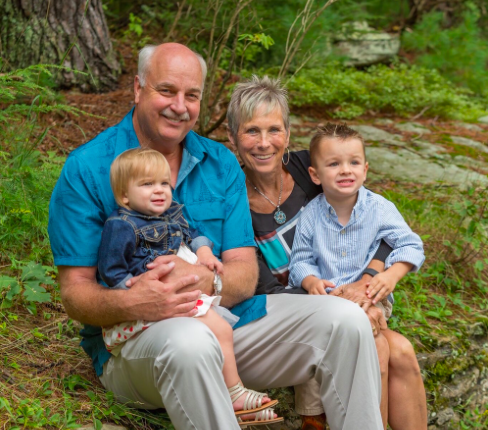Whenever Joan Janssen meets fellow ovarian cancer patients, she shares words of wisdom that she’s gained from seven years of living with the disease. “This is a recurring disease; don’t be stunned if it comes back,” she tells them. “You fought it the first time. You can do it even better the next time.”
Janssen has experienced her share of “next times.” After she was diagnosed in September 2010 with ovarian cancer, her disease recurred twice while she was on chemotherapy. But after she transitioned to clinical trials for targeted therapies at Dana-Farber’s Susan F. Smith Center for Women’s Cancers, Janssen’s condition stabilized. She is managing her ovarian cancer as a chronic disease and celebrating many more milestones with her family in Sun Prairie, Wisconsin.
As recently as up to 10 years ago, ovarian cancer patients had fewer options for treatment. But targeted therapies – which look to exploit genetic changes in cancer cells and make them molecular targets for “smart” drugs – have resulted in better outcomes for some ovarian cancer patients.
“The development of targeted therapies such as PARP inhibitors and antibody drug conjugates has been critical in giving ovarian cancer patients more options,” says Ursula Matulonis, MD, director of Gynecologic Oncology at the Susan F. Smith Center. “By interfering with the repair of damaged DNA in cancer cells, PARP inhibitors have proven quite effective in treating high-grade serous ovarian cancers, which account for 75 percent of cases. If a patient’s response to one targeted therapy diminishes, we have the ability to explore other options either through participation in a clinical trial or even through standard options, too.”
After three different regimens of chemotherapy proved ineffective for Janssen, she started looking for targeted therapy clinical trials. That search led her to Dana-Farber, where she eventually participated in a trial and received a combination of olaparib, a PARP inhibitor, and cediranib, an anti-angiogenesis inhibitor that blocks the epidermal growth factor receptor (EGFR).
The oral medication was easy to take. Janssen was more daunted by the logistics of traveling from Wisconsin to Boston every week for 10 weeks—but only at first. “People ask, ‘How do you manage that?’” she says. “You just put one foot in front of the other and figure things out.” The fact that she experienced few side effects from the medication helped, too.
As Janssen progressed to monthly monitoring, CT scans showed that her fingernail-sized tumors remained stable. She resumed her normal activities: Visiting her grandchildren in Texas, attending her church study groups, sewing hats for needy school children, and spending time with friends and family. She even tackled a lifelong goal of public speaking and started giving talks to medical students.
“Cancer can be a kick in the gut, but it also can be a kick in the pants,” she says. “It forces you to get in the fight, to choose the things you really want to do—and do them.”
After a year and a half, Janssen’s tumors showed some growth. The Dana-Farber team immediately switched her into a different trial for an infusion targeted therapy drug called IMGN-853. “That pipeline of new treatments is key,” Janssen said.
“My quality of life while on the trials has been so great that I currently feel like I may even lick this,” she says.
In the meanwhile, she has been given the precious gift of time. “The targeted therapies make it so easy to just live your life,” she says. “I’m probably not going to go into remission, but thanks to the trials I am keeping myself alive while researchers develop more miracle drugs that I’ll have access to later.”
To read this full article in The Clearity Portal, please click here.


